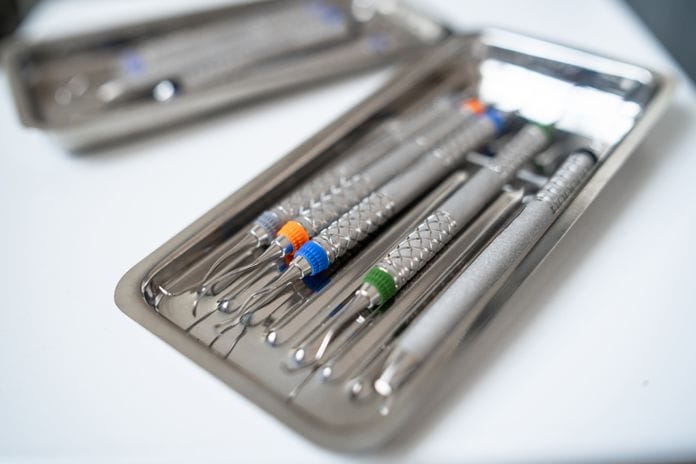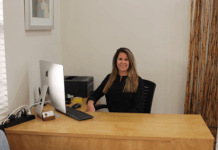I’m not quite sure how to introduce a topic that some may categorize as a dead horse, beaten over and over again. In my opinion, though, instrument sharpening clearly needs to be readdressed in light of recent events.
I suppose I’ll just start with a couple of stories to help shed some light on this recurring issue. One gloomy morning, I arrived at my temporary assignment for the day. After getting myself acquainted with the layout of the room, I proceeded to inspect my first set of instruments, checking for dullness.
Lo and behold, all the instruments were dull as a doorknob (Just as a refresher, if the cutting edge reflects light, it is dull.). I rummaged through the drawers for a sharpening stone and a guide, and I proceeded with sharpening. Not a minute later, a front office staff member ran into the operatory in a seemingly panicked state and exclaimed, “Please do not sharpen the instruments! We do not want temps sharpening the instruments unless they’re really, really dull (nervous chuckle).”
I was, of course, taken aback and thought to myself, “As a matter of fact, these instruments are really, really dull!” Not wanting to pick a fight, however, I politely smiled and apologized.
So the day passed, and, needless to say, I was not able to do my best job. After all, I was removing (or shall I say, attempting to remove) calculus with the equivalent of a toothpick. But, as all temp assignments go, the beauty was I knew I would never have to return. So I didn’t break a sweat about it.
“Stop Sharpening So Often!”
Several months later, I said goodbye to the temping life and settled into a permanent office. I started caring for my instruments. Let me explain what I mean by “caring.” Prior to seating a patient, I would check all my instruments for dullness, sharpening at the beginning of every appointment. When I first started out, all the instruments were also dull as a doorknob − no surprise there. Half of the instruments were quite ready to be rotated out as they were approaching the thickness of an explorer (or should I say, “thinness?”).
I made a note to the dentist and office manager that new instruments were needed, and the need was acknowledged. A few months passed, and no new instruments. I began treading very lightly with the dangerously thin tips, still trying to keep them sharp.
One day, an assistant came up to me and stated that a temp broke an instrument tip the day before, and she (the assistant) noticed the instruments were getting extremely thin. So far, I was in complete agreement with her. But then, I was blown away by her following statement (paraphrased, to the best of my recollection): “I’ve noticed you are sharpening every day, and the tips are very thin. I’ve never heard a hygienist sharpening so often, maybe if you could sharpen just once a week…”
First, there was anger. I was boiling inside. An assistant? Telling me how often to sharpen? Boy, oh boy. Of course, on the outside, I patiently acknowledged her concern and informed her of the facts. Number one: the instrument tips were already thin when I started working there. Number two: I have informed the dentist we needed new instruments a while ago and was waiting to get them ordered. Number three: as hygienists, we were taught to assess for the sharpness of instruments prior to each use.
I honestly thought that was that. Later that week, though, the dentist called me into a meeting to discuss, you guessed it, my frequent sharpening. To sum up the meeting, he was concerned that I was ruining the instruments for which he was paying. He said he understood that he needed to purchase new instruments, but he offered the solution of sending instruments to a sharpening company once a week or simply stop sharpening so often.
I was literally devastated. It was time to go home and prepare for a debate. I pulled out my textbooks and found one that addressed sharpening. The book is called Fundamentals of Periodontal Instrumentation by Jill S. Nield-Gehrig. I found some facts, highlighted the important stuff, and worked up the courage to respectfully request that the dentist read through the highlighted sections to show him that I was not maliciously ruining his instruments. In fact, I was trying to maintain their longevity, along with the longevity of my career.
Within the first paragraph of the sharpening section in the book, I read, “[i]nstrument sharpening is a skill needed on a daily basis.1” Bam! Highlight. A few pages later, I found a gem: “Sickle scalers, curets, and periodontal files should be sharpened after each use or as needed during periodontal instrumentation … Neglected cutting edges require extensive sharpening, increasing the likelihood of damaging the working end.1” Bam, again! Highlight. Aggressively.
Maybe it’s not hitting home for some of you yet, but instruments get dull after each use. Sometimes even in the middle of the appointment, depending on the tenacity of the calculus! There were more areas I highlighted describing how dull instruments require more pressure upon removing calculus, causing undue fatigue to the clinician and undue discomfort to the patient.
Other sections described how sharp instruments could decrease the time required for the removal of calculus. I didn’t need a book to know that one; with a set of sharp instruments, I would typically finish 15 minutes earlier. Fifteen minutes! Let me tell you, my friends, when every precious moment counts in the dental world, 15 minutes turns out to be a very nice buffer zone!
Further, stainless steel instruments only have a lifespan of 9-18 months, depending on many factors such as how many set-ups you have, difficulty of patients, amount of patients you see, etc.2 Also, research shows that after only 15 strokes an instrument begins to dull and bevel changes develop.3 It should also be noted that retipping is not recommended for several reasons; however, that’s a whole other article.4
In the end, I was able to present my case to the dentist, and we worked out a solution that allowed me to continue sharpening regularly.
Confusion and Sadness
Yet, for some reason, I still had this unsettling feeling in my gut. It was no longer anger, but … but … confusion, yes. And sadness. Confusion as to when and where we lost the gravity of sharp instruments. Sadness at the realization that there is truly no one to blame but ourselves for how other dental professionals perceive sharpening.
Come to think of it, in the first story I offered, previous temporary hygienists may very well have ruined instruments with improper sharpening technique. So, naturally, that office wouldn’t want future temps to sharpen the instruments. In the second example, there has not been any regular sharpening going on in that office. So, naturally, everyone was in shock hearing me sharpen all the time and naturally blamed my sharpening when an instrument tip finally broke while a temporary hygienist was using it.
My confusion and sadness was ultimately confirmed when an older dental hygienist came up to me once while I was sharpening and asked in sheer wonder what I was using (pointing to the sharpening guide) and asked if I could show her how to use it, stating that back in her school days, sharpening wasn’t overly emphasized.
In conclusion, I just want to encourage all the hygienists out there to revisit the topic of sharpening. Maybe it’s time for a refresher course or simply read up on the topic. Most importantly, start incorporating regular sharpening in your daily clinical routine. After all, only good things come of it: longer-lasting instruments, less strain on your hands, less pain to the patient, shorter appointment times, and, simply put, a stress-free day at work!
I know I’m probably sounding fanatical at this point. But, honestly, even if I’m running a few minutes late but take two extra minutes to make sure my instruments are sharp, I catch right back up at the very next appointment. It’s wonderful! Some might even say magical!
I rest my case with the wise words of G. V. Black, the founder of modern dentistry: “Nothing in the technical procedures of dental practice is more important than the care of the cutting edges of instruments… The student who cannot or will not learn this should abandon the study of dentistry.1” Can you? Will you? Or, are you going to abandon dentistry?
Need CE? Check Out the Self-Study CE Courses from Today’s RDH!
Listen to the Today’s RDH Dental Hygiene Podcast Below:
References
- Nield-Gehrig, J.S. (2013). Fundamentals of periodontal instrumentation and advanced root instrumentation (7th ed.). Philadelphia: Lippincott Williams & Wilkins.
- Vavrosky, K. 6 Things Hygienists Wished Their Doctor/Boss Knew. Today’s RDH. Retrieved from https://www.todaysrdh.com/6-things-hygienists-wished-their-doctor-boss-knew/
- Tal, H. Panno, J.M., Vaidyanathan, T.K. Scanning electron microscope evaluation of wear of dental curettes during standardized root planing. J Periodontol. 1985; 56(9); 532-6. Retrieved from https://www.ncbi.nlm.nih.gov/pubmed/3897505
- Boge, E. The Rest of the Story: Dental Instrument Retipping. Today’s RDH. Retrieved from https://www.todaysrdh.com/the-rest-of-the-story-dental-instrument-retipping-emily-boge/












